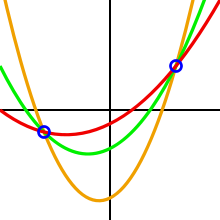# Shamir's Secret Sharing
 - https://arnaucube.com
- https://github.com/arnaucube
- https://twitter.com/arnaucube
- https://arnaucube.com
- https://github.com/arnaucube
- https://twitter.com/arnaucube

2019-07-05
---
# Intro
- I'm not an expert on the field, neither a mathematician. Just an engineer with interest for cryptography
- Short talk (15 min), with the objective to make a practical introduction to the Shamir's Secret Sharing algorithm
- Is not a talk about mathematical demostrations, is a talk with the objective to get the basic notions to be able to do a practical implementation of the algorithm
- After the talk, we will do a practical workshop to implement the concepts. We can offer support for Go, Rust, Python and Nodejs (you can choose any other language, but we will not be able to help)
---
- Cryptographic algorithm
- Created by Adi Shamir, in 1979
- also known by the $RSA$ cryptosystem
- explained in few months ago in a similar talk: https://github.com/arnaucube/slides/rsa
---
## What's this about?
- imagine having a password that you want to share with 5 persons, in a way that they need to join their parts to get the original password
- take the password, split it in 5 parts, and give one part to each one
- when they need to recover it, they just need to get together, put all the pieces and recover the password (the `secret`)
- this, has the problem that if a person looses its part, the secret will not be recovered anymore.. luckly we have a solution here:
---
- Shamir's Secret Sharing:
- from a secret to be shared, we generate 5 parts, but we can specify a number of parts that are needed to recover the secret
- so for example, we generate 5 parts, where we will need only 3 of that 5 parts to recover the secret, and the order doesn't matter
- we have the ability to define the thresholds of $M$ parts to be created, and $N$ parts to be able the recover
---
- 2 points are sufficient to define a line
- 3 points are sufficient to define a parabola
- 4 points are sufficient to define a cubic curve
- $K$ points are suficient to define a polynomial of degree $k-1$
We can create infinity of polynomials of degree 2, that goes through 2 points, but with 3 points, we can define a polynomial of degree 2 unique.

---
## Naming
- `s`: secret
- `m`: number of parts to be created
- `n`: number of minimum parts necessary to recover the secret
- `p`: random prime number, the Finite Field will be over that value
---
## Secret generation
- we want that are necessary $n$ parts of $m$ to recover $s$
- where $n

---
## Wikipedia example
*example over real numbers, in the practical world, we use the algorithm in the Finite Field over $p$
(more details: https://en.wikipedia.org/wiki/Shamir's_Secret_Sharing#Problem)
- $s=1234$
- $m=6$
- $n=3$
- $f(x) = \alpha_0 + \alpha_1 x + \alpha_2 x^2$
- $\alpha_0 = s = 1234$
- $\alpha_1 = 166$ *(random)*
- $\alpha_2 = 94$ *(random)*
- $f(x) = 1234 + 166 x + 94 x^2$
---
- $f(x) = 1234 + 166 x + 94 x^2$
- we calculate the points $P = (x, f(x))$
- where $x$ is each one of the values between $1$ and $m$
- $P_1=(1, f(1)) = (1, 1494)$
- $P_2=(2, f(2)) = (2, 1942)$
- $P_3=(3, f(3)) = (3, 2578)$
- $P_4=(4, f(4)) = (4, 3402)$
- $P_5=(5, f(5)) = (5, 4414)$
- $P_6=(6, f(6)) = (6, 5614)$
---
- to recover the secret, let's imagine that we take the packets 2, 4, 5
- $(x_0, y_0) = (2, 1942)$
- $(x_0, y_0) = (4, 3402)$
- $(x_0, y_0) = (5, 4414)$
---
- let's calculate the Lagrange Interpolation
- 
- 
- 
- 
- obtaining $f(x) = \alpha_0 + \alpha_1 x + \alpha_2 x^2$, where $\alpha_0$ is the secret $s$ recovered
- where we eavluate the polynomial at $f(0)$, obtaining $\alpha_0 = s$
- *we are not going into details now, but if you want in the practical workshop we can analyze the 'mathematical' part of all of this
---
# And now... practical implementation
- full night long
- big ints are your friends
- $L(x) = \sum_{j=0}^{n} y_j l_j(x)$

# About
 - https://arnaucube.com
- https://github.com/arnaucube
- https://twitter.com/arnaucube
- https://arnaucube.com
- https://github.com/arnaucube
- https://twitter.com/arnaucube

2019-07-05

 - https://arnaucube.com
- https://github.com/arnaucube
- https://twitter.com/arnaucube
- https://arnaucube.com
- https://github.com/arnaucube
- https://twitter.com/arnaucube
 - https://arnaucube.com
- https://github.com/arnaucube
- https://twitter.com/arnaucube
- https://arnaucube.com
- https://github.com/arnaucube
- https://twitter.com/arnaucube